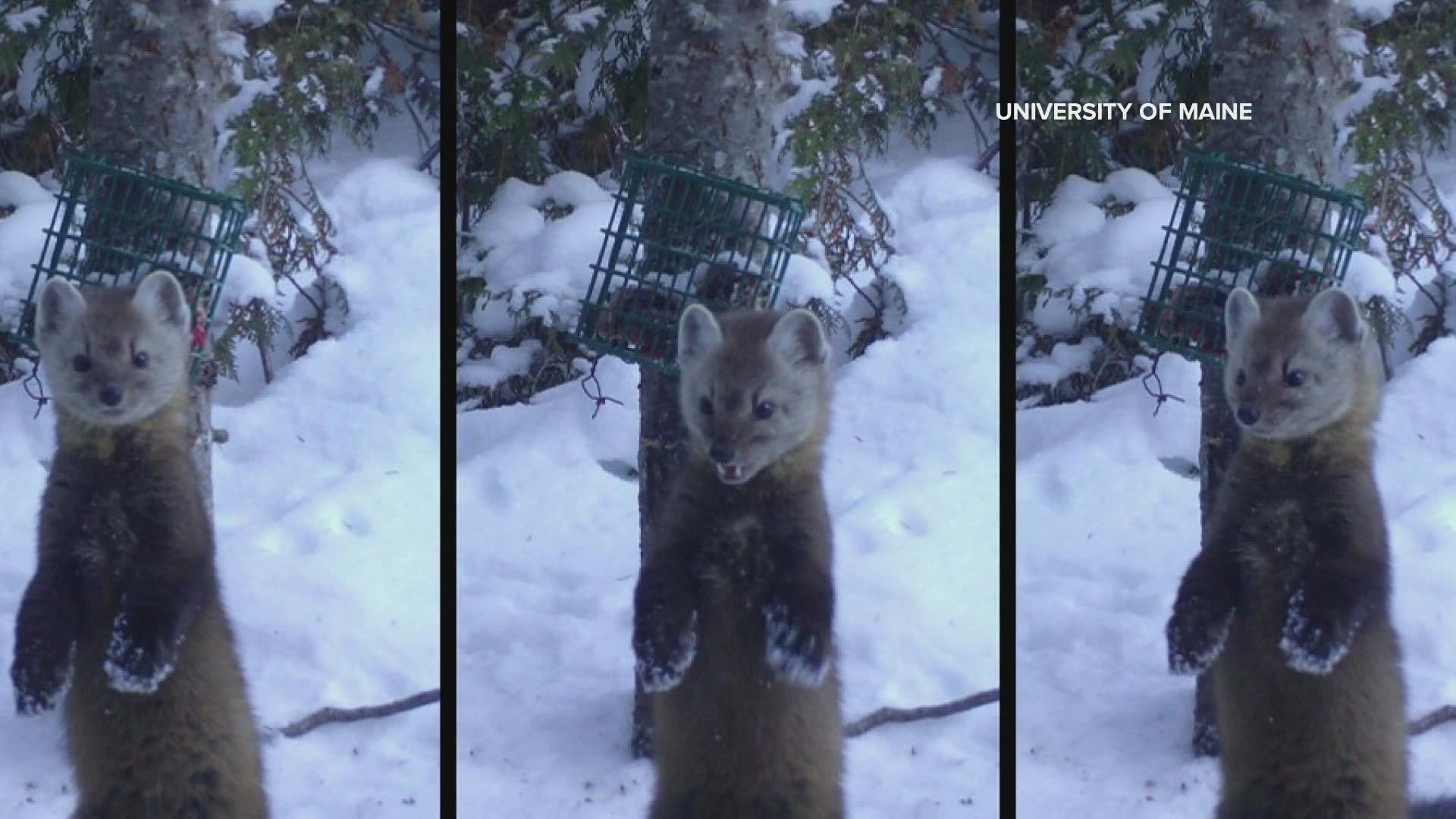ORONO, Maine — The American marten, also known as the pine marten, is a mammal and member of the weasel family that is found in abundance in central and northern Maine, as well as other northern states across the U.S.
It's also a ferocious hunter of smaller mammals and birds and a scavenger of berries when necessary.
For University of Maine wildlife habitat professor Alessio Mortelliti, seeing a marten in a stretch of Maine woods means those woods are healthy.
"Being a predator — so, being positioned relatively high up in the food chain — is always a good sign," Mortelliti said during a virtual interview. "In terms of when you have those predators, it means you have the whole food chain below them."
Over a five-year study, Mortelliti and his researchers set up game cameras around the state and found not just a food chain but a crossroads of Maine’s iconic species running right through marten habitat at every turn. They published their findings, calling the marten an “umbrella monitoring species.”
"If you put in the effort and resources to monitor the trends of the species over time, those efforts you’re putting in will automatically allow you to monitor many other species, and we found up to 11 other species," he explained.
Studying the marten habitat automatically means studying other vital Maine species like bears, deer, moose, and squirrels with less time and money. So, then, protecting the marten habitat could be crucial to those species.
Martens thrive in old-growth forests. The state, UMaine, and industry partners plan for Maine’s forestry industry to be worth $12 billion by 2025.
Across campus from Mortelliti, Aaron Weiskittel runs UMaine’s center for research on sustainable forests. As his title suggests, Weiskittel said his job is to teach the next generation of Maine foresters to think about animal populations as much as profit.
"I think what we’re seeing now is much more holistic foresters that come prepared to handle the demands that society has placed on our forest," Weiskittel said.
"As we train the foresters today, they’re thinking about much broader things than just the typical tree diameter [and] tree height. It’s about wildlife habitat," he continued. "It’s about conservation value."
Bethany Brown runs the Saco River Wildlife Center in Limington.
She brought in and attempted to rehabilitate 846 animals last year, which was her busiest ever. Whether through logging, climate change, or human encroachment, Brown noticed this uptick in animals that otherwise would be happy in the woods.
"Since I started this, I’ve seen a huge increase in the sightings of unusual wildlife, such as the fisher and the weasels," Brown said of the martens' close relatives. "With the increase of seeing them, especially in southern Maine, to me, that means there is a huge decline in their territory, their habitat. The further they go into human habitat, the more conflicts they’re having with people that own chickens or own other animals."
While Brown remains busy, Mortelliti just secured another grant to continue his marten monitoring program long term, including how Maine’s changing climate impacts where they live, how they live, and who else lives under their umbrella.
"What’s the next step looking at the long-distance future?" Mortelliti posed. "So, how should we monitor a species, starting to think about how the species will shift their range in response to climate change."
He's looking for what the mighty marten will reveal next.

